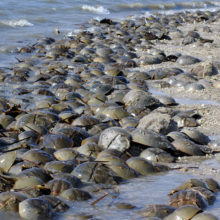Clean water is good for business. The Delaware River and its tributaries generate more than $20 billion in annual economic activity. Outdoor recreation grew at a faster pace than the rest of the economy in 2016, according to a first-of-its-kind report out of the Commerce Department in 2018. The report affirms what we already know – enjoyment and protection of the great outdoors is simply integral to the future of the Delaware.
The river is an economic powerhouse for the entire region. Ski resorts, restaurants, farms and more all rely on the waters of the Delaware River to sustain their businesses. Tourism alone contributes $65 million annually to Pike County, PA, supplying jobs to families and raises quality of life across the region. Some of the main industries that depend on the Delaware include:
- Recreation ($1.2 billion)
- Fish/wildlife ($1.5 billion)
- Public parks ($1.8 billion)
- Water quality ($2.5 billion)
- Navigation ($2.6 billion)
- Agriculture ($3.4 billion)
- Water supply ($3.8 billion)
- Forests ($5.1 billion)
As the Delaware River’s water quality continues to improve, more fish species are returning to the river. This has led to increased tourism and fishing opportunities, resulting in higher profits. People travel far to fish in the Delaware River! In fact, Anglers in the Upper Delaware River spend about $331 million annually at fishing sites.

A Great Egret at Bombay Hook National Wildlife Refuge along the Delaware Bay. Flickr – Nate Hughes
A Quick Look at the River’s Economic History
The Delaware River’s bountiful harvests and navigable waters have been used for economic gain by the peoples around the river for thousands of years. By the 18th century, Philadelphia served as a hub for merchants because of the Delaware River’s trade route connections. During the late 1800s, every Philadelphia wharf had railroad access and steam ships, which provided fast transatlantic trips for locals.
Toward the end of the 19th century, the Delaware River supported the largest commercial American shad and sturgeon fishery along the Atlantic coast. This brought artists from all over to create artwork of the fish and the Delaware River. By the mid-1900s, the Delaware River’s ship channel was deepened and the port economy boomed as vessels were repaired after World War II. Finally, by 2010, a billion gallons per day were withdrawn from the Delaware basin to sustain the region’s economy and supply drinking water to the first (New York City) and seventh (Philadelphia) largest metropolitan economies in the U.S. The Delaware River’s economy has a rich history that has continued to present day.

Buttermilk Falls within the Delaware Water Gap National Recreation Area. Flickr – Nicholas T
The Delaware River Port Complex also provides significant economic benefits. The port (including docking facilities in Pennsylvania, New Jersey and Delaware) is the largest freshwater port in the world and is important to not only the region, but also the nation. In 2017, the Delaware River Port Complex reached $85.6 billion in business revenue after more than 90 million tons of cargo move through various ports. Additional imports and job growth are predicted in the future for the port, which will continue to bolster the Delaware River’s economic contribution.
Cleaner Water, Better Economy
The Delaware River not only provides recreational opportunities and a place for the community to enjoy, but also jobs for many people and contributes to the local economy: 600,000 direct/indirect jobs with $10 billion in wages in various industries.
As the region’s population continues to grow, the demand for jobs will increase. This is why Delaware River restoration efforts are so important! A cleaner Delaware River leads to more jobs, economic opportunities and revitalization. We must make sure that we protect this important waterway to ensure its economic prosperity continues for years to come.
The Delaware River’s significant economic contribution is another reason to stand up for our water. You can make a difference: Tell your governor to protect our jobs.






